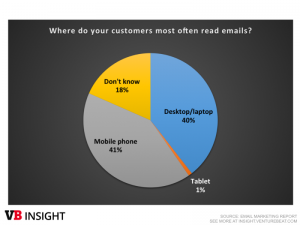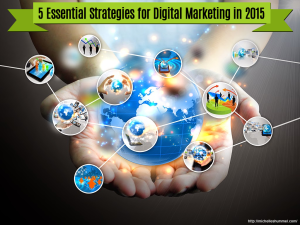— November 1, 2018

QuinceMedia / Pixabay
Digital commerce is growing at lightning speed. Putting pressure on B2B Executives to transform their businesses. Commerce models that have been relied on for the past twenty to thirty years will give way to a new robust era of digital commerce. If B2B companies are not thinking about this, planning for this, and doing something about this – they will bound to be in big trouble.
Before the turn of the new millennium in 2000, it was downright unthinkable in B2B that the model of sales representative and buyer interaction would ever change. The most controversial item on executive meeting agendas before the new millennium was if ”small inside sales team to handle small customers” should be created. Fast forward to where we are today with 2020 fast approaching, we have seen a model that existed for nearly a century completely upended.
Consider this, in a recent Accenture survey, only 12% of B2B buyers even wanted to meet with a sales representative. Furthermore, nearly 70% of B2B buyers are conducting transactions and purchases strictly online.
It is not surprising then that this same 70% of B2B buyers would switch brands based solely on their digital commerce experience.
Digital Commerce Experience Matters As Much As Customer Experience
This transformative upending in B2B commerce has led to both buyers and B2B organizations viewing customer experience as a more important factor than product and price. Many customer experience efforts by B2B organizations have content marketing as a cornerstone for such initiatives. In a previous article, I mentioned that one of the most heavily produced forms of marketing advisory content has to do with mapping content to the buyer’s or customer’s journey. A result of more and more B2B companies trying to improve their customer experience capabilities.
What can be missing, and I have found missing in a couple of year’s worth of conducting buyer interviews, is B2B organizations are compartmentalizing customer experience. Not seeing customer experience as part of creating an overall Digital Commerce Experience for their buyers.
With online research as the most important element of B2B purchase decisions, many B2B organizations are putting emphasis on developing content-driven customer experiences. Certain industries are still severely lagging in this area as well. What is at issue for B2B organizations is B2B buyers are advancing at a faster rate. Moving past customer experience expectations to Digital Commerce Experience expectations. It is no longer good enough to satisfy just the experience element of search and evaluation but to develop commerce experiences. Experiences that carry through end-to-end purchase paths, post-purchase experiences, and considers the entire customer lifecycle over time.
How Do We Improve The Digital Commerce Experience?
70% appears to be the magic number – at this point in time. In close proximity to this percentage, buyers are preferring to do everything related to commerce digitally. This is the percentage we usually hear regarding B2B buyers who prefer to buy online or how far along they are along their purchase path. I suspect by 2020, this percentage will increase beyond 80%.
With 2020 fast approaching and the digital commerce disruption evolution unstoppable, what can B2B organizations do to transform their capabilities in providing Digital Commerce Experience?
Change the mindset of compartmentalizing online commerce: as a general observation, I suspect many B2B organizations are still possessing a mindset of their online business as separate from their traditional B2B sales efforts. Here is how one interviewee from a mid-size B2B company put it:
“We have seven people in our online department handling that part of the business.”
This is the type of mindset that has created a host of problems leading to bankruptcies in the American retail industry. Online versus offline is no longer “a part” of the business as a “versus”, it is the business of online and offline.
Think like Amazon: Amazon has been the driving force behind causing seismic changes in how consumers search, shop, interact, and buy. Especially among millennials, this is the new norm of commerce. It is bleeding over into B2B. Amazon is exploring B2B buyer and seller connections now. It will not be long before Amazon affects B2B in a bigger way.
Seamless integration is a must: B2B businesses must pursue seamless integration across multiple platforms and channels. For buyers, they will have expectations of not being forced to choose a platform or channel because one experience is better than the other. Hear the voice of this interviewee from a recent buyer insight and buyer persona research effort:
“ I stopped ordering online and went back to just calling in an order. It was such a mess every time, I didn’t want to deal with it.”
Integrate human-centric and data-centric insights: this is another area where the mindset of compartmentalization can be detrimental to understanding buyers today. B2B businesses today need both types of insights in a world moving towards digital commerce on a global scale. Human-centric insights are needed to help them understand why buyers are compelled to fulfill the quest they are on to solve a problem or meet a goal. Data-centric insights are needed to understand how buyers are interacting and choosing when interacting online. In order, however, to get data-centric insights, companies must be able to generate online interactions. In some industries, there are still a significant number of B2B businesses who generate little online interactions.
Think holistically about Digital Commerce Experience: as mentioned above, B2B organizations can no longer just think about content-driven customer experience. By 2020, leading organizations will be focusing on digital commerce holistically in terms of search, content, mobile, social, channels, platforms, fulfillment, delivery, and retention. Thinking holistically will mean extending beyond end-to-end purchase paths but to the entire customer lifecycle.
Build digital commerce systems capabilities: for some readers, I am sure there may be a sense of frustration if their organizations are burdened with legacy systems that date back a decade or two. Perhaps even more. Digital commerce capabilities will require investment in IT transformation and migrating away from limiting legacy systems. With corporate/supplier websites the main source of interactions for B2B commerce today, simplifying interactions at least at this level is a must. This also means building in mobile capabilities across platforms.
Digital Commerce Disruption Unabated
We are back to the 70% figure again. This is the percentage of B2B executives, in the study mentioned above, who believe that the biggest need they have in order to address digital commerce is deeper customer understanding. Which means, B2B organizations will need to develop a strong game in acquiring deep buyer insights.
The march towards a digital commerce world will continue unabated and with increasing speed by 2020. There are multiple threats on the horizon that B2B organizations will have to prepare for when it comes to transforming to a digital commerce world.
One no-win option, however, is standing still and doing nothing.
(Here is an excellent interview featuring Brian Walker of Accenture, from a recent Dreamforce Conference, with great thoughts on B2B Commerce trends.)
Digital & Social Articles on Business 2 Community
(53)
Report Post







